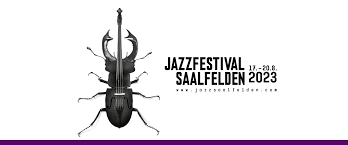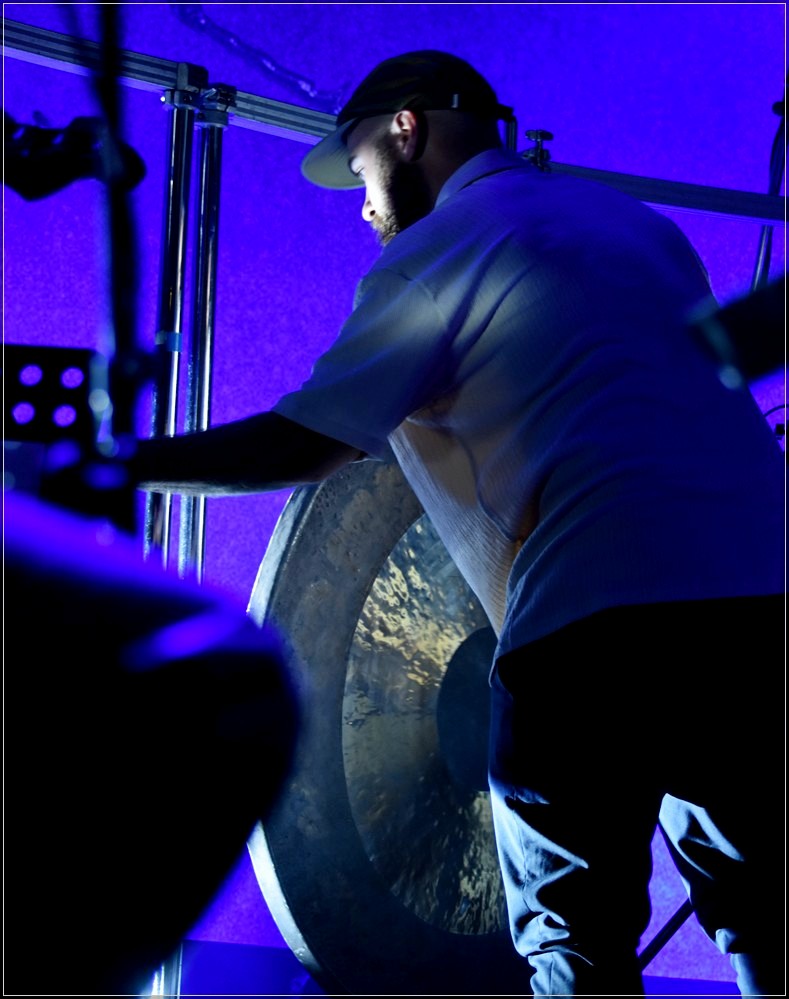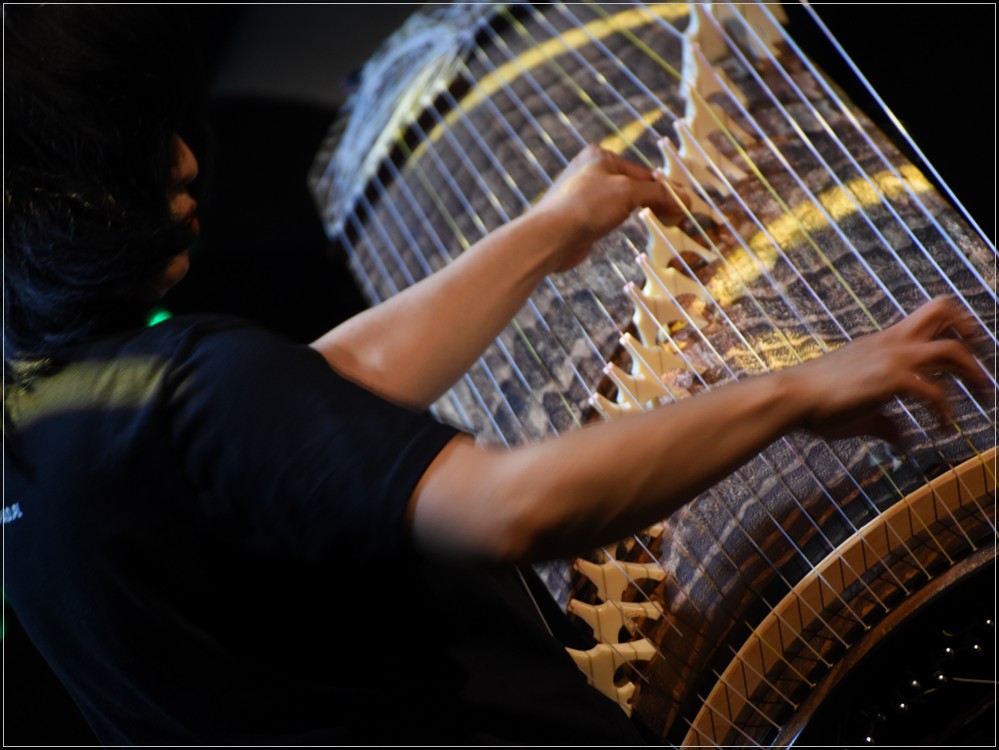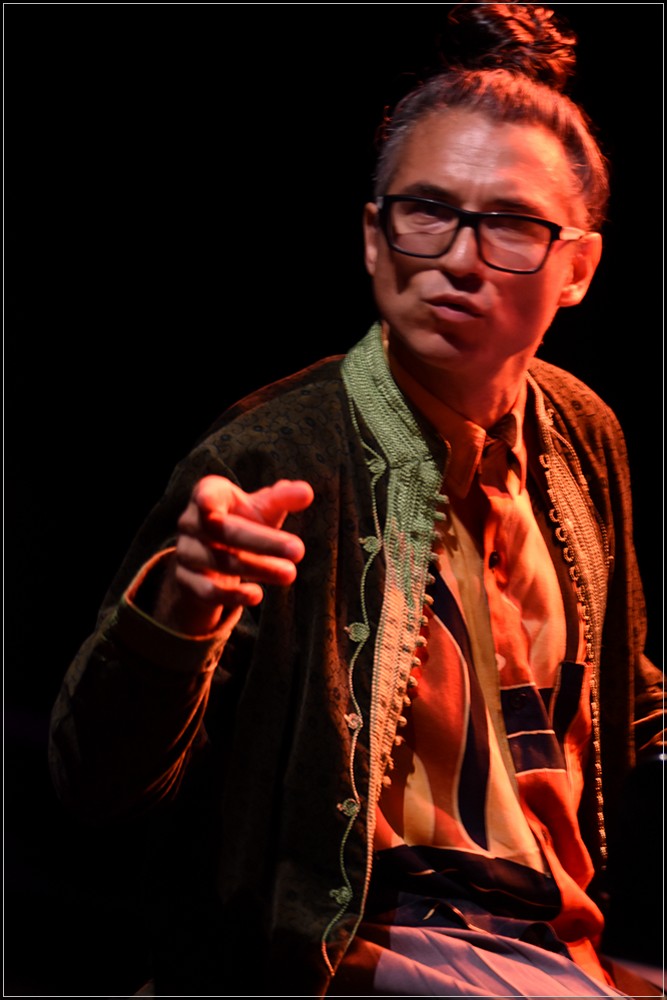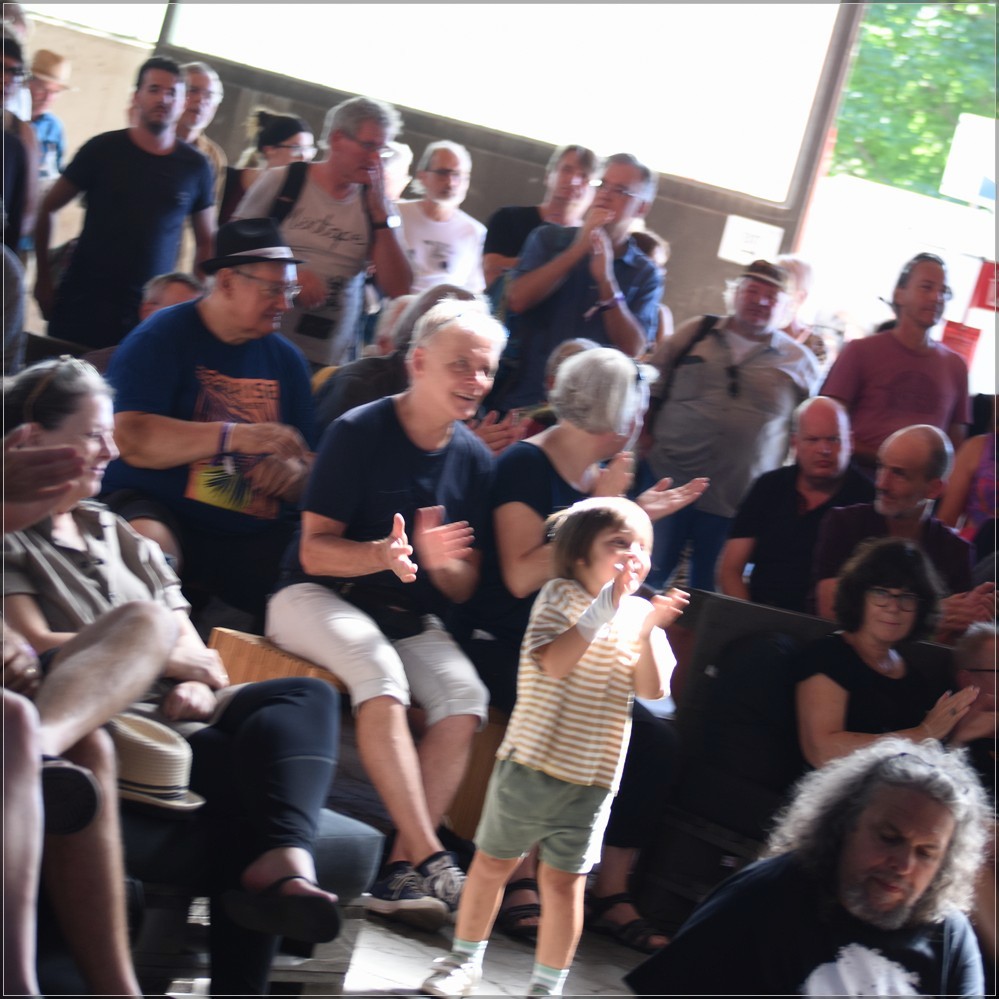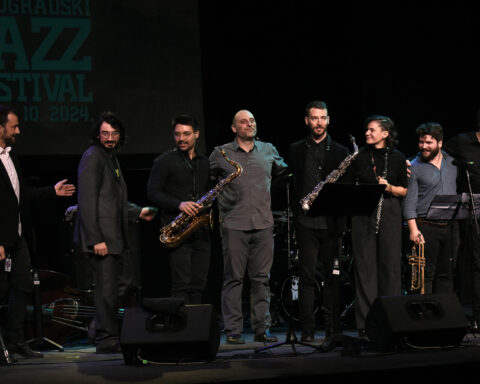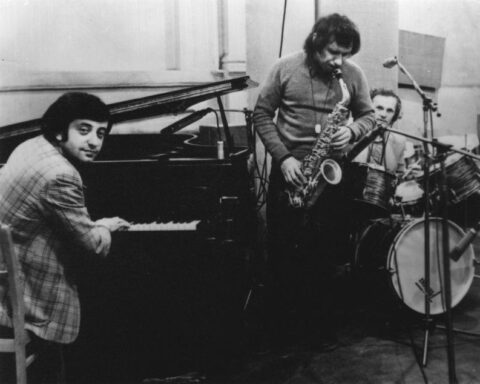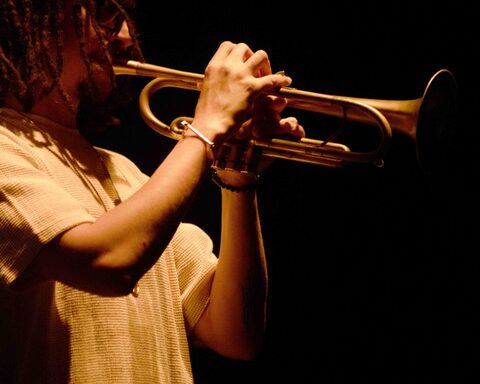The bravely creative and far-reaching 43rd edition of Jazzfestival Saalfelden for jazz and improvised music took place in this Austrian town of 16,000 in the center of Europe, in a basin between ranges of the Austrian Alps, from August 17 through 20. It was significant on many levels.
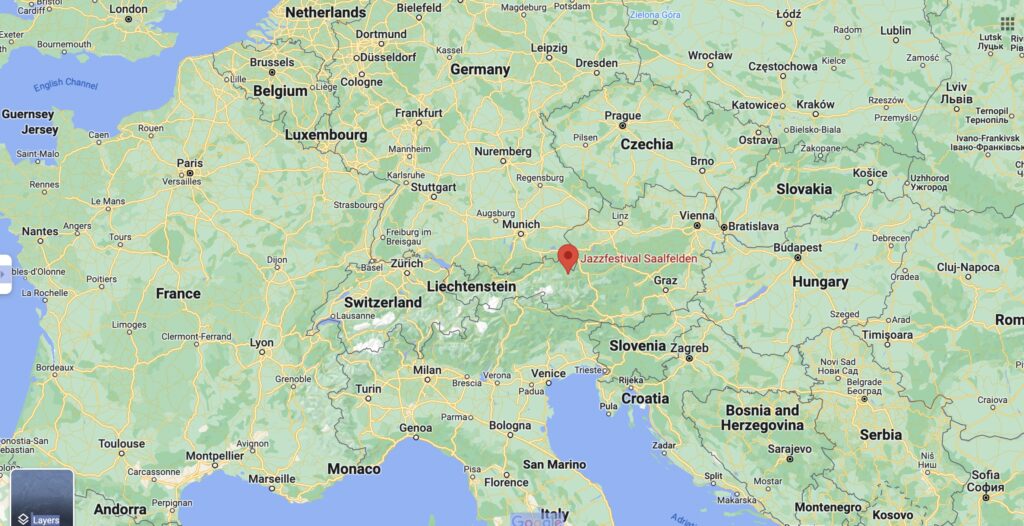
Some numbers: 176 artists from 14 countries and five continents; 60 concerts, more than half of them free of charge, at 13 venues; 150 staff members; two main programs completely sold out, and Mainstage’s record sales of 98%.
Though showing a positive balance, the festival’s budget of 830,000€ could not keep pace with the growth of expenses (e.g. transcontinental flights cost have risen almost two-and-a-half times, which has influenced programming of many European festivals this year) as well as with the post-Covid 2022 festival, when due to circumstances two to three years of planned productions had been presented. Nevertheless, those obstacles led to the best possible results.
The JFS team has written that it sees jazz less as a musical style than as a synonym for openness, experimentation and freedom crossing musical boundaries. And that’s what the team helped happen.
Wanting to keep the price of tickets as before to protect the audience’s costs, and sticking boldly to the principle that all musicians should be fairly treated when it comes to money issues, the fest’s dedicated management implemented the very core characteristic of jazz into the festival: the challenge of interaction between musicians. Instead of numerous musicians leading their own ensembles, they improvised within the festival concept by emphasizing rare or unique collaborations between them.
The results were fun and challenges for both the audience and the performers playing in various formations as well as attending each others concerts and hanging out/socializing afterwards. Dialogues were the main domain where artists found their inspiration.
It was as Austrian drummer/percussionist/electronics experimentor Lukas König explained through his performance of “Sound Hazard” as a starter of the festival on Mainstage featuring a unique formation for “his marimba-gong-drone concept” with Pat Thomas (piano, electric piano), John McCowen (contrabass clarinet), Farida Amadou (electric bass), Luke Stewart (double bass) plumbing depths of low register sound.
Michiyo Yagi’s Dojo with drummer Tamaya Honda is possibly the world’s first koto-drum power duo. They explored, in two concerts, an inclination toward Norwegian scene with Eivind Aarset (guitar) and Ingebrigt Haker Flaten (bass, bass guitar, electric bass). In a third show with Chicago-based drummer/percussonist Hamid Drake, Yagi conveyed a universal message of love and harmony through acoustic spiritual exchange. All her concerts were powered by Arts Council Tokyo.
Drake also engaged in lively, friendly call-response with pianist Myra Melford (Chicago-born, New York City-tempered, a Berkeley, California professor and internationally concertizing recording artist), in a stylishly diversified set which he brightened at the very end using his cymbal in league with her heavy thick gospel emotion. Melford and Allison Miller (drums) co-led the Lux Quartet featuring Dayna Stephens (saxophone) and Scott Colley (bass).
Tennessee-raised saxophonist Zoh Amba has won the hearts of the audience with her attitude and uncompromising free jazz sensibility. She invited Nick Dunston (bass) to a duo impro session, and performed as “Bhakti” with Micah Thomas (piano) and Chris Corsano (drums) as well as in quartet with Anna Högberg (sax), Billy Martin (drums/piano) and Lukas Kranzelbinder (bass). Dunston and Ingebrigt Haker Flaten turned out to be backbones of numerous performances.
Argentine pianist Leo Genovese confronted everyone in trio with Demian Cabaud (bass) and Jeff Williams (drums), and “Cosmic Brothers” Luis Vicente (trumpet), Joao Pedro Brandao (sax), Demian Cabaud (bass), Alfred Vogel (drums). Lisbon-based Vicente’s trio with Goncalo Almeida (bass) and Pedro Melo Alves (drums) hosted saxophonist Tony Malaby in an open-ended piece titled “Chanting In The Name Of”.
Brekky Boy, a trio from Sydney, Australia comprising Taylor Davis (piano/synth), Ryan Hurst (bass) and Alex Hirlian (drums), akin to the heralded Scandavian trio e.s.t., pushed the boundaries of sound with their current repertoire and led a jam session on Saturday. Anna Högberg’s project (to) Attach/ked presented her onomatopoetic discourse on motherhood within a Swedish free jazz sextet, and led a subtle interplay with Mother Nature in the forest, accompanied
by Flaten and versatile drummer-percussionist Julian Sartorius who performed in many jam session formations. Fatherhood was addressed by trumpeter-synthesist Rob Mazurek in the breathtaking “Fathers Wing” with Fabrizio Puglisi (piano), Flaten (bass) and Chad Taylor (drums) as well as in “The Machine” father and son duo of Michael (bass clarinet) and Lorenzo (drums) Riessler, performed in an old industrial hall.
Swiss singer-compioser Andreas Schaerer, beloved by the audience, was afforded significant attention in concerts featuring his electronics, beatbox and vocalizing along with Kalle Kalima (guitar) and Tim Lefebvre (bass), with whom he also had duets, and the electronic “Stellar Stutter” with Svetlana Maras (electric bass), Björn Meyer (bass) and Sartorius.
The festival sometimes represented a binary, contrasting complete improvisation with through-composed works such as those of the Ralph Mothwurf Orchestra, which provided delicate sounds, played from a graphic sheet-music score in contrast with five hikes, flash mobs (last-minute app notices about surprise concerts in the city center), and “Spiritual Unity” late night jams. But all were in venues of special significance for the city, heightening their affects and proving to be inspiring.
For instance, local people jealously proud of their heritage demonstrated their distinctly European sense of humor speaking up in defense of one performance site, a 600-year-old farmhouse, against the Nyckelharpa. That rarely heard 800-year-old Swedish instrument, a keyed, hurdy-gurdy fiddle was played by the Norwegian/Catalan (and yet Austrian!) Lofoten Cello Duo.
The Buchbinderei Fuchs, a printing house that is a hub of local creativity, holding workshops and advancing new techniques in book production and graphic arts, hosted bold improv sessions. And at the very end of festival, the hosts greeting their audience in Spalier (forming an arch, as a guard of honor, through which we passed), was an emotional highlight.
Festival attendance based on ticket sales, app users, venue possibilities, food and drinks distribution was approximated at 20.000, exceeding last year’s record, mainly due to the massive attendance at free events indoor and outdoors, some oriented towards pop, folk or world music.
The core audience was mostly elders, although the Nexus+ program of rap, “alternative” and local artists who were smartly called to jam with jazz players at the late night sessions attracting more young listeners than ever before.
The festival finale — announced as “divine and biblical” — was delivered by longtime Saalfelden friends trumpeter Dave Douglas (who recalled his first performance here 30 years ago, as did some in the audience), saxophonist James Brandon Lewis and drummer Joey Baron, along with Marta Warelis on piano and Dunston. We even heard some syncopated piano classics. Once again, the great musicians played out their great personalities, allowing space for spontaneous dialogue engaging all their personal styles.
Jazzfestival Saalfelden’s team, guided by artistic director Mario Steidl, producer Daniela Neumayer, producer and organizer Marco Pointner again provided unique, high quality programming founded in jazz and improvised music. Their success will, we hope, help them acquire the 10% higher budget they seek, the better to realize their vision in next year’s edition.

